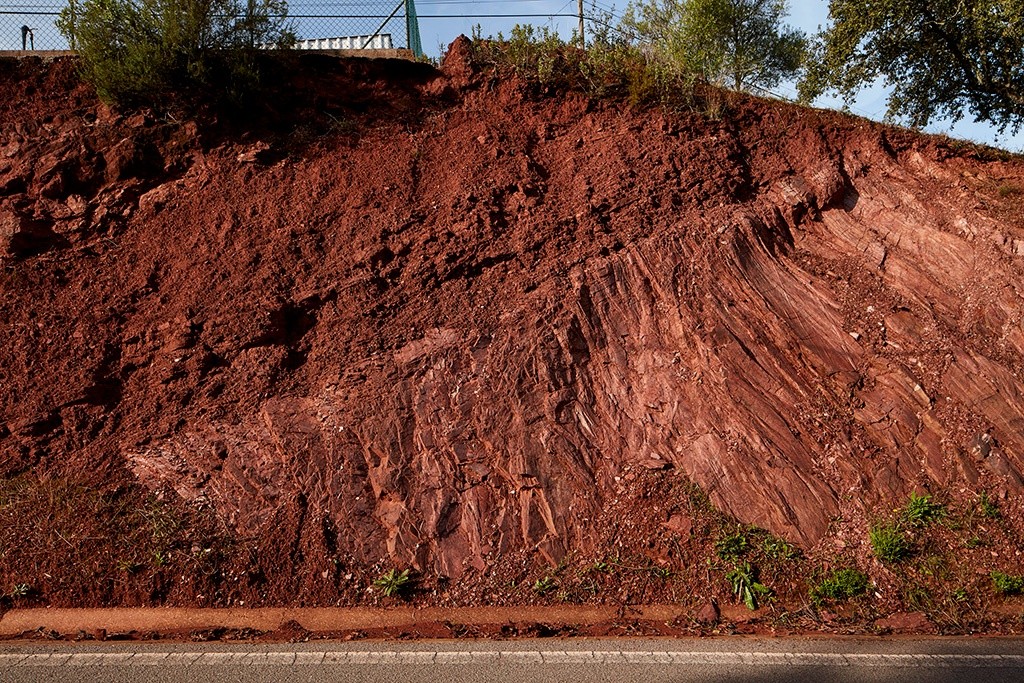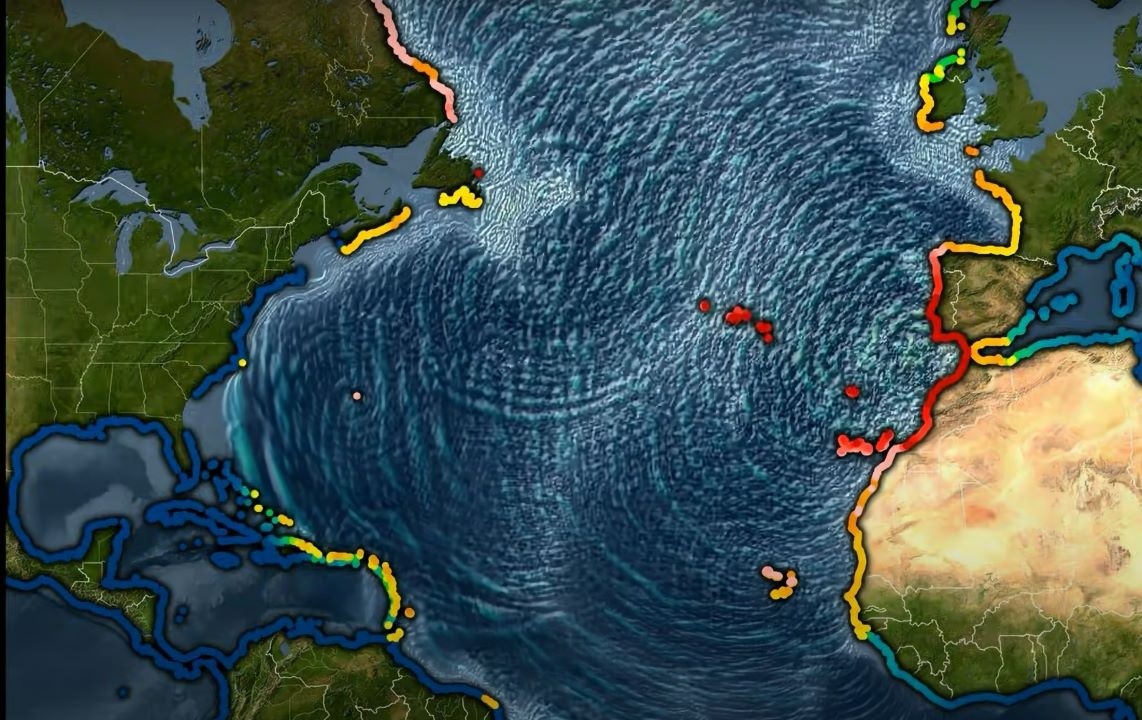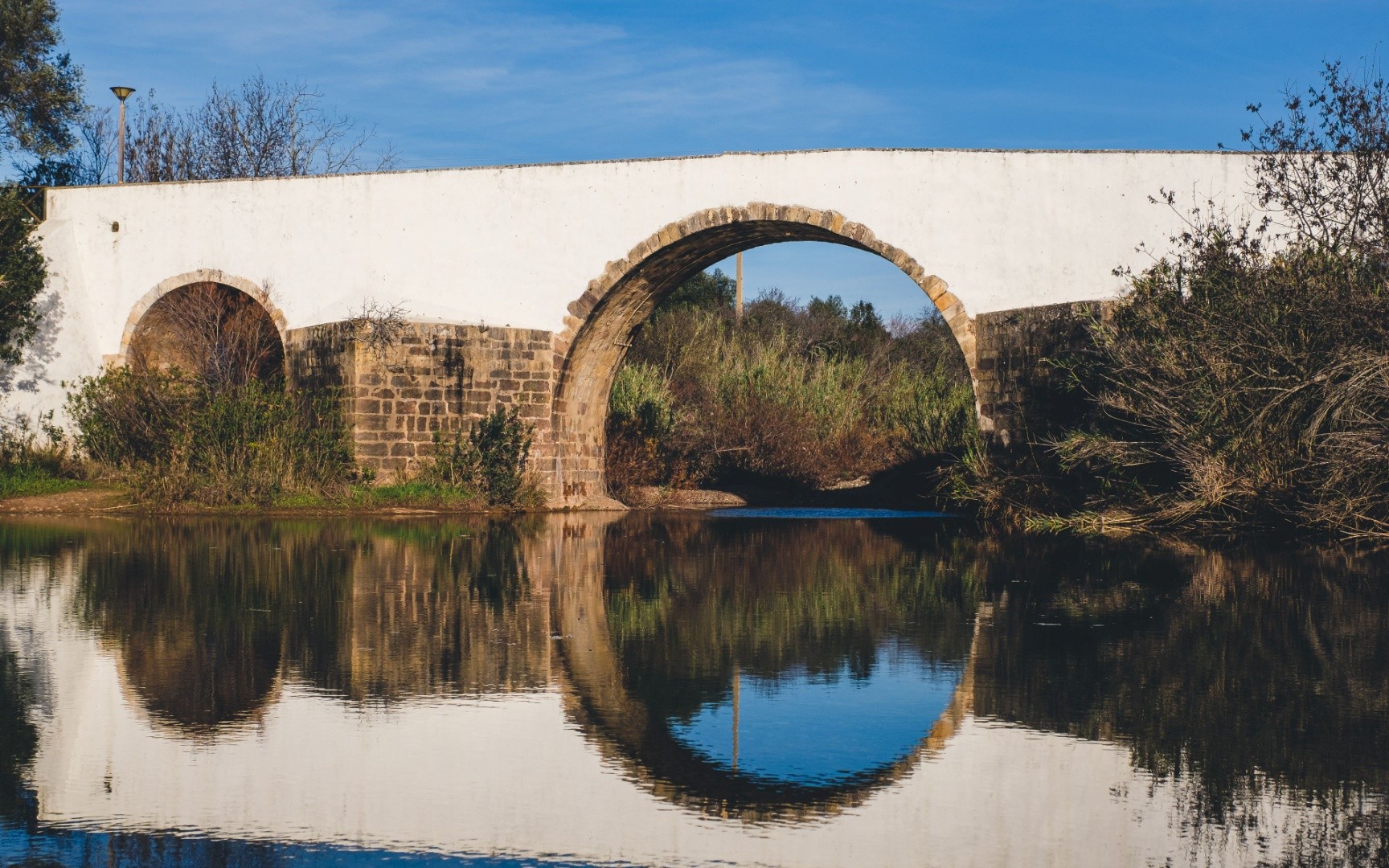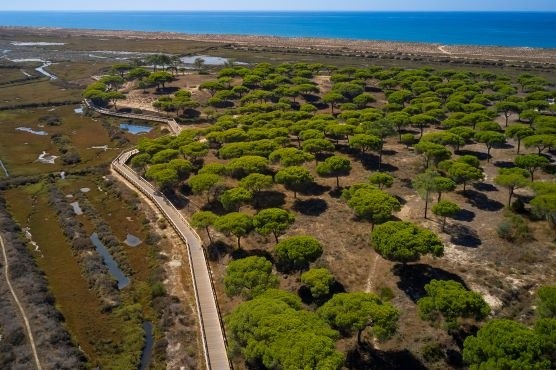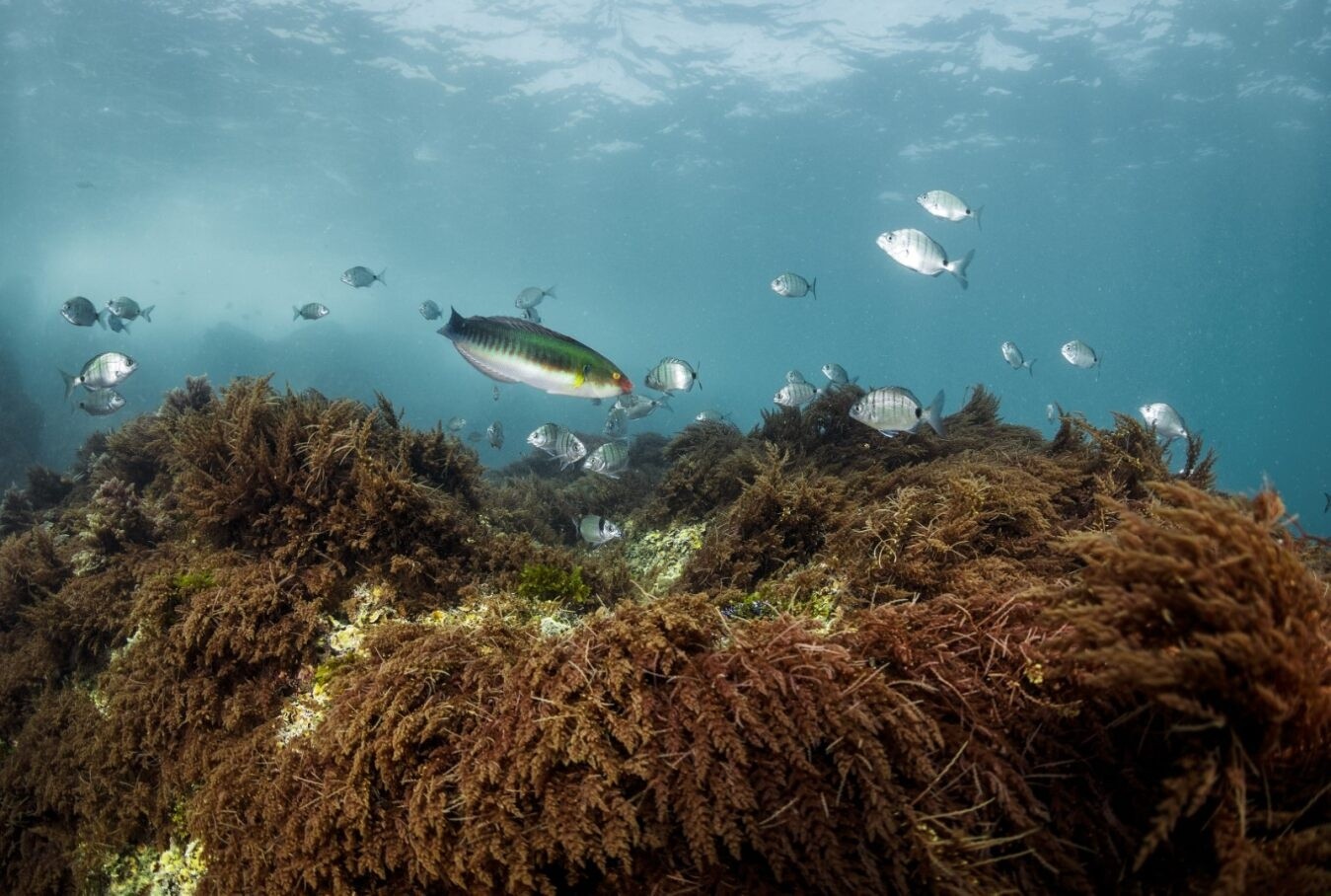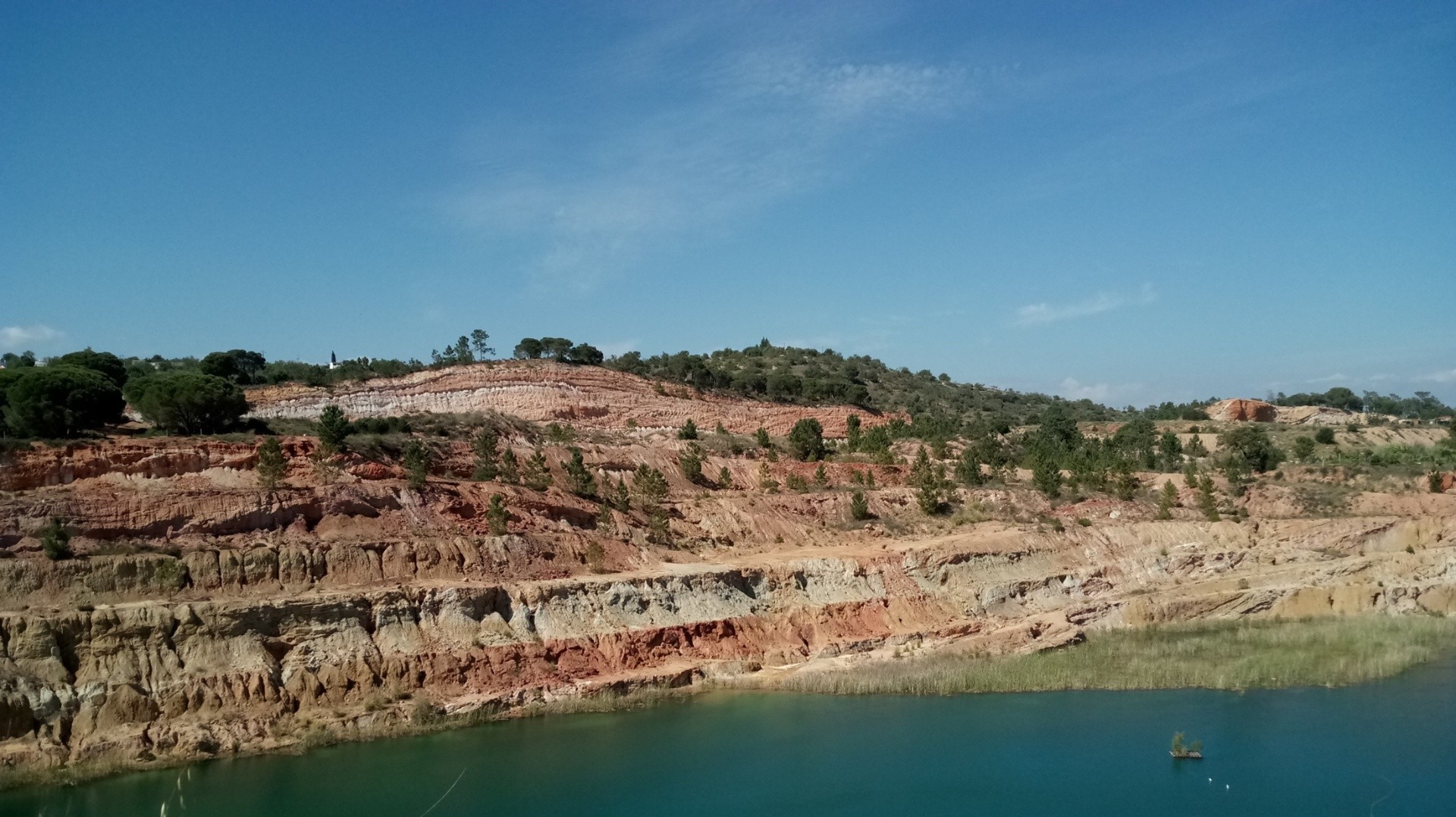Geological History
The law of superposition states that in sedimentary layers, older layers are typically found beneath more recent ones. However, tectonic activities, such as fault movements and folding, can disrupt this order, placing older layers above younger ones. This phenomenon is evident in the slopes along the railway line in São Bartolomeu de Messines.
In this area, the shales and greywackes from Serra do Caldeirão represent the oldest units of the Algarvensis territory, dating back to the Carboniferous period (359-299 million years ago). These rocks have been pushed upwards along a fault that crosses the region, resulting in their position above the more recent red sandstones from the Triassic period (252-201 million years ago).
Additionally, in the same outcrop, you can observe dislocation faults marked by quartz veins, as well as layers of reddish claystones that contain lenticular gypsum crystals. These structures originated during the early stages of marine water evaporation, which coincide with the initial deposition of evaporites in the Algarve Basin at the Triassic-Jurassic boundary.
Locality: São Bartolomeu de Messines




